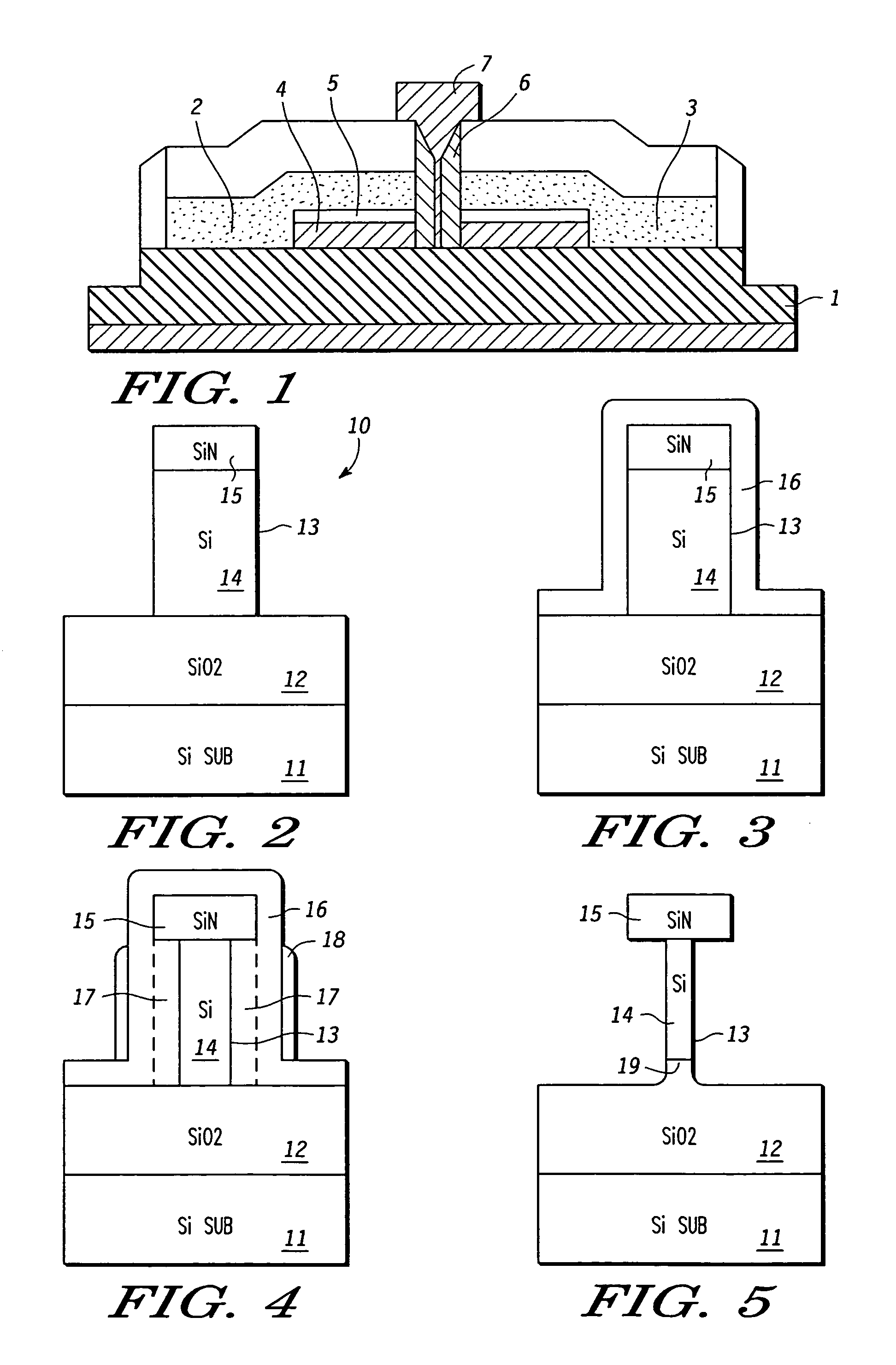Method of fabricating three dimensional gate structure using oxygen diffusion
a three-dimensional gate structure and oxygen diffusion technology, applied in the direction of semiconductor devices, electrical appliances, transistors, etc., can solve the problems of increasing the difficulty of maintaining high performance characteristics, becoming increasingly difficult to fabricate the needed smaller dimensions of mosfet features, and forming thin fin structures (approximately 20 nm in width) from a soi (semiconductor on insulator) structure,
- Summary
- Abstract
- Description
- Claims
- Application Information
AI Technical Summary
Problems solved by technology
Method used
Image
Examples
Embodiment Construction
[0017]The following detailed description of the invention is merely exemplary in nature and is not intended to limit the invention or the application and uses of the invention. Furthermore, there is no intention to be bound by any theory presented in the preceding background of the invention or the following detailed description of the invention.
[0018]It has now been discovered that an additional process step or steps can be added during the fabrication of fin structures to avoid the above-mentioned prior art shortcomings and limitations. A diffusion layer of, for example, silicon dioxide is deposited around an oversized silicon fin. Oxygen is then allowed to diffuse through the diffusion layer, to the silicon fin, whereupon the oxygen reacts with the silicon to form silicon dioxide. Control of parameters such as the time and temperature of oxidation, and of the thickness of the diffusion layer on the sidewall of a fin structure, affects the degree of oxidation that takes place. Pro...
PUM
| Property | Measurement | Unit |
|---|---|---|
| temperature | aaaaa | aaaaa |
| temperature | aaaaa | aaaaa |
| width | aaaaa | aaaaa |
Abstract
Description
Claims
Application Information
 Login to View More
Login to View More - R&D
- Intellectual Property
- Life Sciences
- Materials
- Tech Scout
- Unparalleled Data Quality
- Higher Quality Content
- 60% Fewer Hallucinations
Browse by: Latest US Patents, China's latest patents, Technical Efficacy Thesaurus, Application Domain, Technology Topic, Popular Technical Reports.
© 2025 PatSnap. All rights reserved.Legal|Privacy policy|Modern Slavery Act Transparency Statement|Sitemap|About US| Contact US: help@patsnap.com



